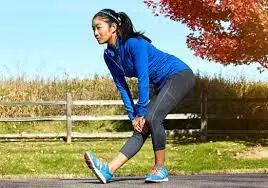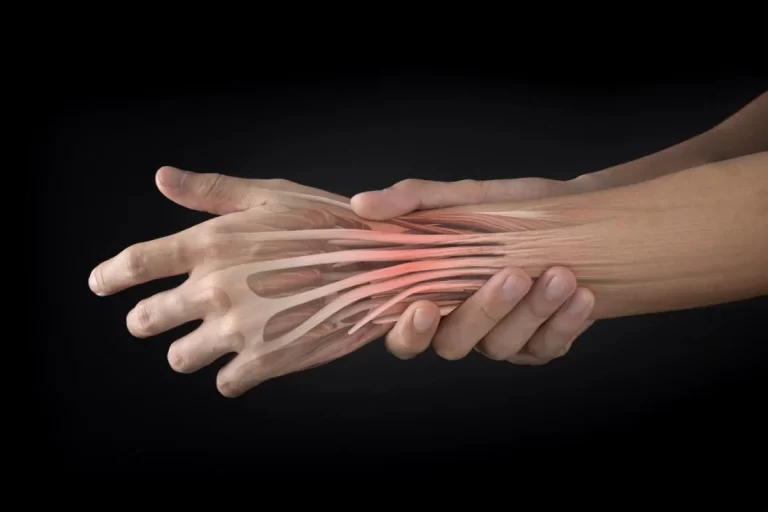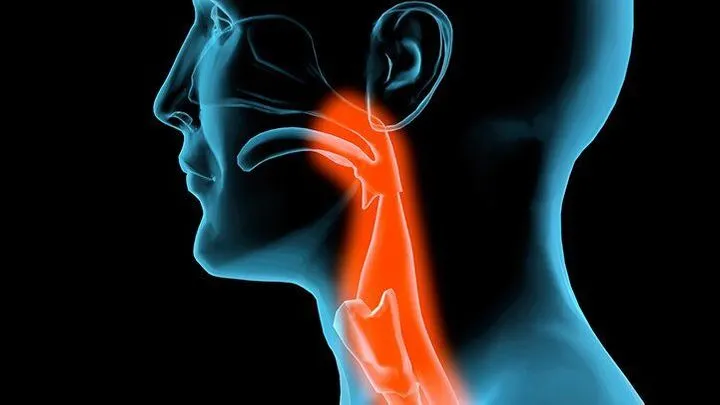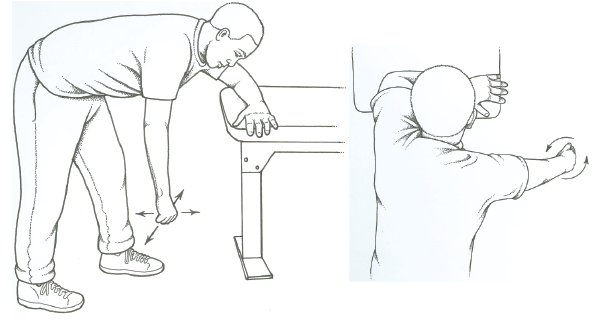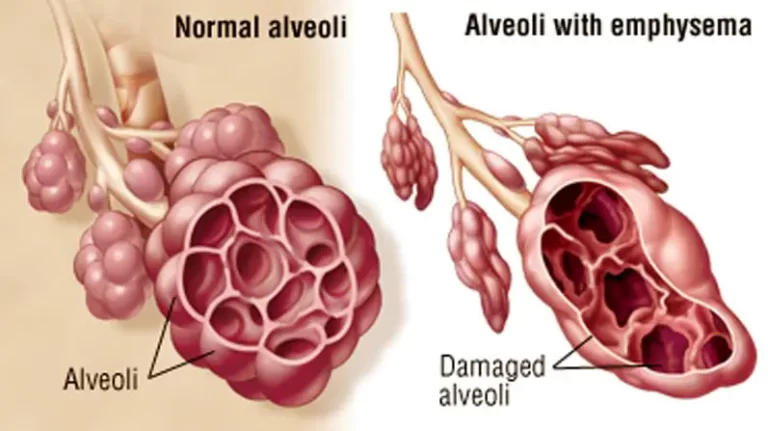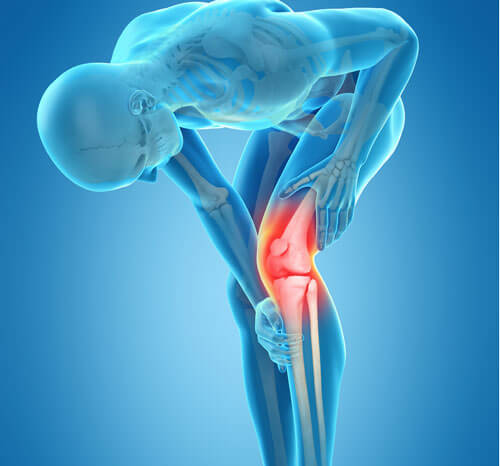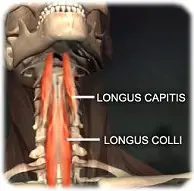24 Best Leg Stretching Exercises
Muscle stiffness is a common occurrence among many of us, considering the multitude of tasks our legs perform daily. It may be difficult to walk, stand, and sit when this occurs. Sitting for lengthy periods shortens muscles, which is the most typical cause of tightlegs. However, you may experience stiffness, pain, and discomfort as your muscles heal after a very strenuous leg workout. For this reason, stretching is essential.
You can reduce this tightness by executing leg stretches regularly.
Leg stretches can assist in restoring short, tight muscles to their full, functional length, allowing them to move through a healthy range of motion. muscular flexibility is essential for proper muscular function.
In certain situations, tight leg muscles may even be a contributing factor to the development of back discomfort. Tight leg muscles might also make you more vulnerable to injury during regular and outdoor activities. so it’s necessary to stretch the muscles in your legs to avoid this.
Flexibility doesn’t happen overnight, however. For some persons, improving joint mobility may require weeks of consistent stretching since they are by nature less flexible than others.
Warming up your muscles before beginning an exercise program is an excellent suggestion. An injury is more likely to occur to the muscles that have not warmed up sufficiently and may be easily achieved with a short, intense warm-up like dynamic stretching or running. The majority of physicians advise including stretching in your workout protocol, especially if you like to run or ride a bike. In this article leg stretches are suggested to improve flexibility and reduce the risk of injury.
What is the Stretching Exercise?
Stretching is a type of exercise where a particular muscle or tendon (or muscle group) is purposefully extended and flexed to increase the muscle’s perceived flexibility and attain a comfortable muscle tone. Increased muscular control, flexibility, and range of motion are the physical changes that occur.
Stretching is a form of physical activity that involves lengthening and relaxing your muscles. It can be done for a mixture of causes, including:
- To increase range of motion and flexibility
- To lessen stiffness and discomfort in the muscles
- To avoid harm
- To enhance athletic performance
- To release tension and stress.
Muscles of The Leg and its Function
The leg muscles are a group of muscles that assist you in driving your legs. Both the upper and lower legs include them. The hip and knee joints can be moved by the muscles in the upper leg, while the ankle and foot joints may be moved by the muscles in the lower leg.
Following are the group of muscles located in the leg:
- Quadriceps: The quadriceps are a set of muscles that are located at the front of the thigh. They are accountable for expanding the knee joint.
- Hamstrings: The hamstrings are a set of 3 muscles that are located at the back of the thigh. They are reliable for bending the knee joint.
- Adductors: The adductors are a set of muscles that are located on the inner thigh. They are accountable for getting the legs together.
- Abductors: The abductors are a set of muscles that are located on the outer thigh. They are responsible for driving the legs away from each other further.
- Calf muscles: The calf muscles are a set of 2 muscles they are located at the back of the lower leg. They are accountable for plantarflexing of the ankle joint, which suggests pointing the toes down.
- Anterior tibialis: The anterior tibialis is a muscle that is located at the front of the lower leg. It is reliable for dorsi flexing of the ankle joint, which suggests pointing the toes up.
- Posterior tibialis: The posterior tibialis is a muscle that is located on the inner side of the lower leg. It is responsible for inverting the foot, which suggests shifting the sole inward.
- Fibularis longus: The fibularis longus is a muscle that is located on the outer side of the lower leg. It is reliable for everting the foot, which suggests shifting the sole
The function of the Leg Muscles
The leg muscles have a mixture of vital functions, including:
- Movement: The leg muscles are reliable for all of the major motions of the lower extremities, including walking, running, jumping, and kicking.
- Balance and stability: The leg muscles preserve balance and stability by supporting the weight of the body and delivering proprioception, which is the sense of body position and motion.
- Power: The leg muscles are some of the considerable strong muscles in the body. They are reliable for developing the power demanded for activities such as running and jumping.
- Circulation: The leg muscles assist in pumping blood back to the heart by tightening and relaxing. This is necessary for maintaining circulation and stopping blood clots.
Stretching Exercise for The Leg
Stretching for The Quadriceps Muscles
Powerful quads can assist you in maintaining your balance while sparring, ensuring safety during weight lifting, and maintaining stamina during the long run. As with any other major muscle in the body, injuries to the quadriceps can happen quickly.
1. The side Lying Quad Stretch

The most effective quad stretches target not just the quads but also the entire leg, from the hip to the thigh to the foot. The lying quad stretch is ideal for persons who have knee problems or prefer to recline rather than stand.
- Lying face down with your left hand supporting your head up. You may also do this stretch while lying on your side.
- Pull your right foot towards your buttocks and bend your left knee to stabilize yourself after a few seconds.
- Hold onto your ankle for 30 seconds before returning to the beginning position.
- Change sides, pulling your left foot behind you and bending your right knee.
2. The Simple Quad Stretch
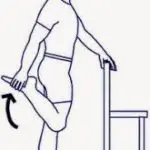
This basic stretch exercise is excellent for muscle repair at any time and in any place.
- Stand on one leg. If necessary, you can use a chair or the wall to retain your balance.
- Using your right hand, grab your right foot and bring it towards your buttocks. Keep your chest high and your hips forward.
- Avoid putting your foot too near to your back; instead, concentrate on feeling the stretch in your quads and moving your hips forward to obtain a proper hip flexor stretch.
- Hold the posture for 20 to 30 seconds, then move from your left to right leg.
3. The Kneeling Quad Stretch

This posture, a small variation on the quad stretch, can assist in releasing the muscles right above the knee joint, promoting mobility and reducing knee discomfort.
- Begin the stretch in a high lunge with your left foot forward.
- Drop your right knee gently to the floor and take a minute to regain your equilibrium.
- When you’re ready, reach back with your right arm and grip your ankle or toes, whichever is easier.
- Maintain the posture for 30 seconds while maintaining your body stable. Push a bit harder to attain a hip flexor stretch.
- Return to the starting position gradually, switching from your left to your right foot.
4. Lying Pigeon Quad stretch
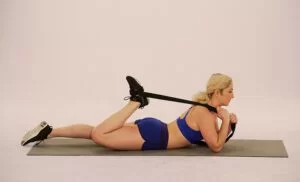
Yoga is responsible for some of the finest quad stretches. This position is great for stretching not just your quads but also your quadratus lumborum (back). It is also an excellent hip flexor stretch that may help you progress to the pigeon and pigeon-twist stretches.
- Lying face down on a carpet on the base. Wrap a resistance band around your left foot, leaving the extra band in reach. If you don’t have a resistance band, you may use a towel.
- With your left hand, grasp the band. Bend your left knee while maintaining your right leg extended and your toes pointed towards the ceiling.
- Pull forward with the resistance band until you feel a stretch.
- Hold for 10 to 20 seconds before pulling farther.
- Return to the initial position and do the other side.
5. The Bow Pose (Dhanurasan)

If you want to stretch out your gluteus maximus and thighs, this might be the stretching stance for you. Stretch your arms, chest, and shoulder blades as well.
- Begin by resting on your stomach with your body propped up on your elbows.
- Bend both knees and reach back to get hold of your feet. At this stage, you should be able to feel the stretching.
- If you don’t have the mobility to accomplish this right now, use a towel to bridge the gap.
- Adjust your fingers to point in the same direction as your toes, then slowly raise your elbows to point at the ceiling. Extend your chest as far as you can.
- If you feel any pain in your hip or knee, stop the posture immediately.
- Stay here for five breaths before relaxing.
Stretching for The Hamstrings Muscles
Common causes of tight hamstrings include overuse during vigorous activities like football, tight hip flexors or glutes, and even excessive sitting. The back of your leg may feel stiff, painful, or burning if your hamstrings are tight. To assist in alleviating or avoiding tight hamstrings, try these hamstring stretching exercises to help increase total hamstring flexibility.
6. Simple Hamstring Stretch
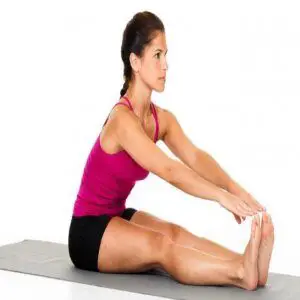
- Sit with both legs extended straight out on the floor.
- Bending at the waist as much as you can while maintaining a straight knee, extend your arms and reach forward.
- For fifteen to thirty seconds, maintain this posture.
- Return to your starting location with ease. Do this three times.
- Stretch until the backs of your thighs begin to gently pull.
- You must stop the workout if you experience any severe pain. Practice with precaution as this exercise may strain your back if you have sciatica or lower back pain.
7. Hurdler Hamstring Stretch
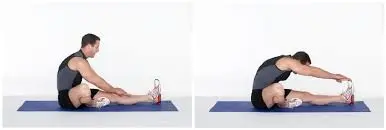
The hurdler hamstring stretch is a straightforward exercise that may be performed on the floor.
- Sit on the base with one leg expanded out in front of you.
- Flex the second leg at the knee and set the sole of that foot against the inside of your opposite thigh.
- Extend your arms and extend forward over the straight leg as far as possible by bending at the waist.
- Maintain this posture for 10 seconds. than relax.
- Rep with the opposite leg.
8.Standing Hamstring Stretch(Both Legs)
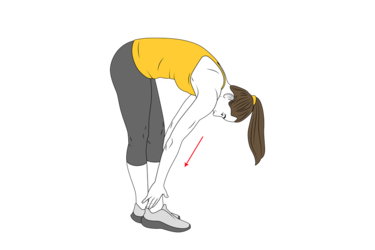
The next hamstring stretch is performed while standing and extends both legs simultaneously.
- Set up your right foot in front of your left and cross it.
- By bending at the waist, slowly drop your forehead to your right knee.
- Maintain a straight line with both knees.
- Preserve this stance for 15 to 30 seconds. Relax.
- Cross your left foot in front of your right foot and repeat on the opposite side.
9. Standing Hamstring Stretch (One Leg)

One of the simplest stretches is the one-legged standing hamstring stretch. Do it anywhere at home, in the office, or outside.
- Stand tall with one heel on a small block, a yoga block, or a stool. a straight knee.
- Raise both arms so that they are approximately level with your ears. Reaching your arms up, rather than down towards your foot, can help keep your back straight.
- Bend your hips forward gently. Feel the hamstring extend behind your thigh.
- Repeat three times, holding the stretch for 15 to 30 seconds each time.
- Rep with the opposite leg.
10. Towel Hamstring Stretch
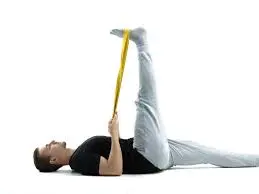
- To conduct towel stretches, utilize towels, although a strap or belt can also be used.
- Lie on your back on the floor. Wrap a long bath towel over your toes and grip the ends in both palms.
- Tighten the towel gradually to lift your extended leg. Make sure your knee is straight. The leg that is not covered by a towel should be kept flat on the ground.
- Raise your leg till you feel a stretch behind your thigh. You may also feel a calf stretch. This is typical.
- Maintain position for 15 to 30 seconds before relaxing.
- Repeat on each leg three to five times.
- Remember that the towel hamstring stretch should feel relaxing while performing it; if it hurts, stop immediately and try something different.
11. Standing Forward Bend
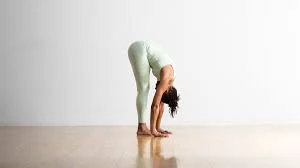
The standing forward bend is a simple hamstring stretch that takes advantage of gravity to aid in deepening the stretch. If your lower back is hurting, proceed with caution or try another stretch.
- Stand tall with your arms overhead. Fold forward from the hips, your hands reaching for the floor. Your hips should be higher than your ankles.
- The purpose of this stretch is not to touch your toes. Only go as far as you can without unnecessarily bending your knees (they can be slightly bent, but not bent to attempt to get lower, since this will not stretch your hamstrings).
- Take note of your quadriceps, which are the muscles on the front of your thighs. Engage your quads to increase the hamstring stretch.
- Preserve the position for 15 to 30 seconds.
- Return your upper body to a standing position.
Streching for The Adductor Muscles
12. Adductor Strech lying

- Lie down on your back, bend your knee, and extend your legs to the side.
- The adductor muscle group, located on the inside of your thigh, will stretch.
- Repeat three times on the tight side, holding the stretch for 30 seconds each time.
13. Adductor Stretch Standing
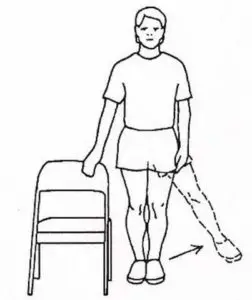
- Stand with a wide stance and lean to the side, stretching the inner of your leg.
- Hold the stretch for the desired amount of time, then relax.
- Take caution not to extend too much, the adductor muscles on the inside of your thigh can easily pull if you stretch too far.
- For 20-30 seconds, hold a mild stretch.
14. Sumo Full Squat
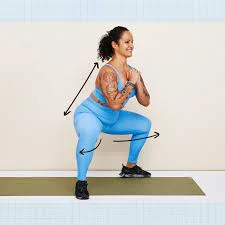
- Extend your feet and spread your legs to twice the width of your shoulders.
- Squat to your complete squat posture.
- Keep your feet firm on the ground and don’t allow your heels to elevate off the floor.
- Rep 10-12 times.
15. Butterfly Stretch
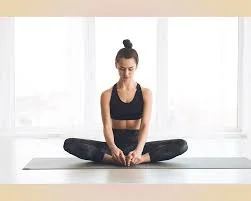
Stretching the inner thighs, groin, and lower back is known as the butterfly stretch in yoga and fitness.
here is how to perform butterfly stretch:
- Extend your legs out in front of you while seated on the ground. Bring the soles of your feet concurrently and flex your knees.
- Your knees should be gently pressed towards the floor. If necessary, you can gently press your knees down even lower with the aid of your hands.
- Sit upright and extend your back.
- While holding for 30 to 1 minute, take steady, deep breaths.
- Return your legs to the starting position slowly to release.
Stretching for The Abductor’s muscle
Leg abductor muscles are also beneficial. When walking, running, or standing, keep your hips and pelvis stable. This is why it affects posture, stability, and mobility.
16. Pigeon stance
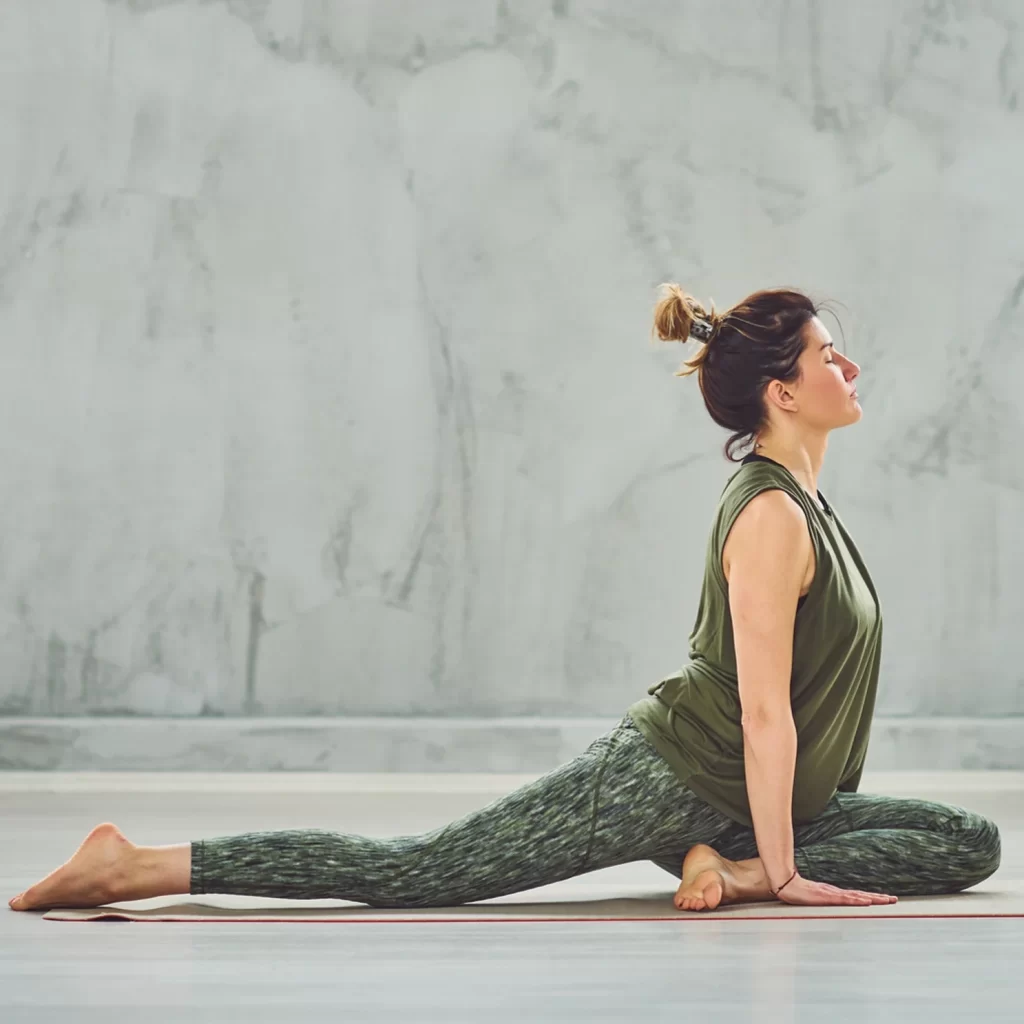
Pigeon posture works the hip abductors and glutes while simultaneously extending the hip flexors of the extended leg.
- Begin with a high plank stance. Bring your right leg forward and behind your right wrist. Straighten your left leg back.
- Lower your hips to the floor until you feel a stretch in your right hip.
- Maintain your upright posture or bend forward on your front leg for a deeper stretch.
- Hold each side for 30-60 seconds.
17. Figure 4 stretches
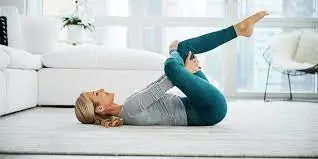
Figure 4 stretches are effective for opening up the hip abductors. it relieves hip stiffness and is best done after a workout when you’re fatigued and want to lie down.
- Lying down on your back, legs flexed, and feet flat on the floor.
- Form a “4” with your feet by crossing your right ankle over your left knee.
- Grab your thigh and slowly bring your right knee towards you until your right hip stretches.
- Hold the button down for 30-60 seconds. Repeat on the opposite side.
18. Cross-legged squat Strech
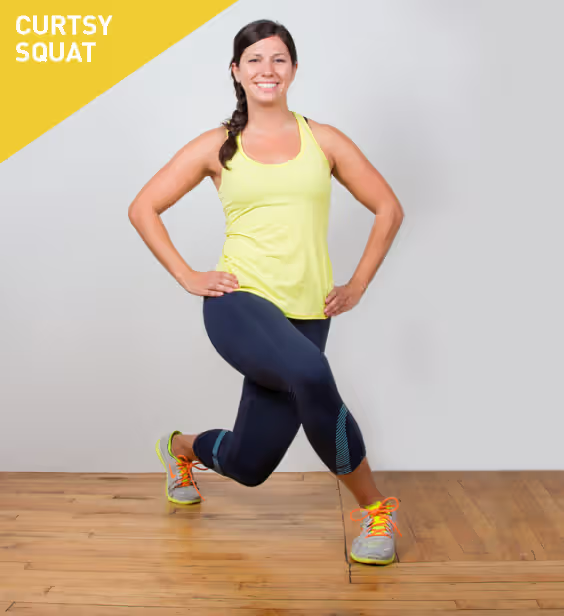
This basic stretch may be done at any time of day, whether you’re working at your desk, reading, or watching a movie.
- Cross your legs and cross your right ankle over your left knee.
- Due to your weight, your waist should extend somewhat.
- If you have knee discomfort, get a cushion to sit on to ease the strain.
- Hold the button down for at least 30-60 seconds. Alter your legs.
19. Leg cradle when standing
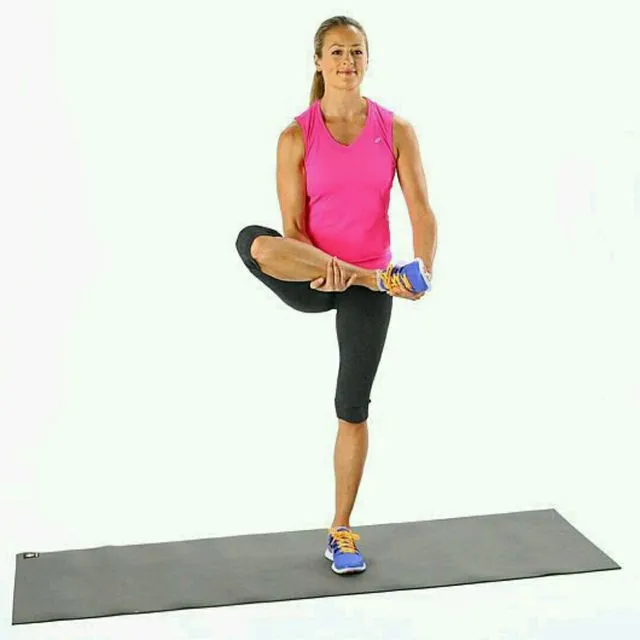
- Raise your right foot off the ground and stand tall.
- Use your right hand to hold your right knee and your left hand to hold your right ankle.
- Gently draw your legs over your body and embrace them at the waist.
- Notice how your hips and glutes stretch. On both sides, press and hold for 5 seconds.
- Repeat on each side 10 times.
Stretching for the Calf Muscles
Walking around all day or doing intense exercise puts a lot of strain on these muscles. Their lack of typical flexibility can have an impact on how you distribute your weight and how much pressure you put on other parts of your body as you move.
Your foot, ankle, and knee could not work as they should as a consequence. This might prevent you from engaging in your favorite hobbies by causing tightness, pain, or even damage.
Stretching your calves daily will assist if you find that they are tight. Try performing the following exercises daily. By doing this, you may be able to stretch the muscle fiber and maybe reduce your discomfort.
20. Standing Calf Strech
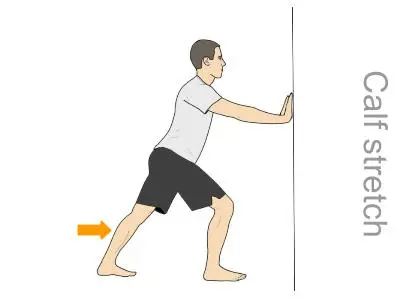
- Place your right foot behind you, making sure your toes are pointed forward, and position about three feet away from a wall.
- Maintain your heel on the base and lean forward with your right knee straight.
- The medial and lateral portions of this muscle will be targeted differently by slowly rotating the toes in and out.
- Hold this for 30 to 60 seconds.
21. Wall Calf Strech
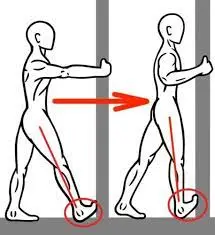
- Step back from a wall approximately two feet.
- Keeping your heel on the ground, press the toe of your right foot up against the wall.
- Lean slowly and softly against the wall, maintaining a straight knee.
- For 30 to 60 seconds, hold this.
22. Towel Calf Stretch
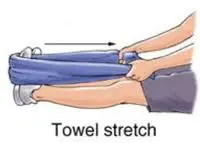
- For this stretch, a towel is needed.
- Place both of your legs straight out in front of you while sitting on the floor. Wrap the handtowel around one forefoot. Hold the towel by both ends.
- Draw the towel inward while maintaining erect legs, then hold the pose for thirty seconds. Next, relax for a half-minute.
- After completing the stretch three times, switch to the opposite side. If needed, apply more force to the towel to adjust the stretch’s intensity.
23. Downward Dog Yoga Strech
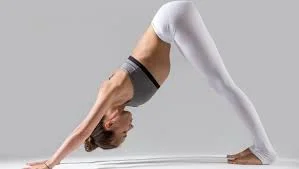
- Throughout the stretch, the back should remain straight.
- Place your hands behind your shoulders on the ground as you drop on all fours.
- Move your hands a little forward on the ground. To provide a wide foundation of support, spread your fingers widely.
- Tighten your core muscles and raise your hips towards the ceiling.
- Slowly attempt to straighten your knees while keeping your heels on the floor. Keep this up to 10 to 15 seconds relax.
24. Alphabet Ankle Stretching

- With your legs out in front of you, take a seat on the floor.
- Your big toe may be used to point your toes and trace the alphabet’s letters in the air. Make sure you travel both ways.
- The ankle joint’s flexibility and mobility will both benefit from this stretch.
How to Perform Safe Stretching?
Here are tips to perform safe stretching:
- Take calm, deep breaths with each stretch.
- Give each stretch a minimum of 30 seconds of hold.
- Avoid bouncing or forcing the stretch.
- If you experience pain, stop.
- Recall that it’s critical to pay attention to your body and avoid overexerting yourself.
- Seek assistance from a competent personal trainer or fitness teacher if you’re unsure how to perform a stretch correctly.
The Advantages of Stretching Exercise
- Enhanced flexibility and range of motion: Stretching allows you to increase the range of motion in your joints, which can make it more comfortable to perform everyday activities and decrease your danger of harm.
- Decreased muscle soreness and stiffness: Stretching assists in improving blood circulation to your muscles, which can aid in relieving muscle soreness after a workout.
- Enhanced circulation
- Improved posture: Stretching can assist in enhancing your posture by lengthening your muscles and connective tissues. Lowered risk of injury
- Relieves stress: Stretching can help relieve stress by removing tension in your muscles. Stretching can assist in enhancing your sleep quality by relaxing your body and mind.
When to Stretch:
- Before activity: Active stretching can assist in warming up your muscles and preparing them for activity.
- After an activity: Static stretching can assist to cool down your muscles and prevent soreness.
- Throughout the day: Stretching can be accomplished at any daytime period, even if you haven’t been exercising.
How to Stretch:
- Warm up before stretching.
- Stretch gradually and gently.
- Breathe deeply and evenly.
- Hold every stretch for 30 seconds. Stretch regularly.
FAQs
How do you loosen tight leg muscles?
There are several strategies you can use to loosen tight leg muscles, depending on the severity of the tightness and your level of activity. You can lose the tight leg muscles by stretching exercises,self-massage, and heat therapy.
What is the goal of leg stretching?
Increase circulation: Stretching promotes blood flow to the muscles, which not only nourishes them but also aids in the elimination of waste byproducts from muscle tissue. Get rid of the pain: Many have quadriceps, hamstrings, and hip flexor muscle discomfort. Improve Flexibility.
Why is my leg muscle so tight?
A sprain or strain, which can damage both the muscles and the ligaments, is the most common cause of muscular stiffness. When the muscular fibers are stretched or ripped, this is a strain. Strains are most frequent in the legs and lower back. A sprain occurs when ligaments are strained, twisted, or ripped.
Is stretching beneficial after a leg workout?
Stretching after leg day is beneficial for muscle recovery, but it should not be your exclusive focus. For starters, you must properly recover between workouts to avoid further muscular soreness and potential injury. Remember that tense muscles don’t just make for bad exercise.
What are the advantages of stretching?
Most people don’t think about stretching until something hurts, but there are advantages to doing stretching: Enhanced range of motion, Stretching helps to lengthen your muscles, Ache and pain relief, Decreased risk of overuse injuries, Enhanced quality, Stress reduction, and relaxation.
References
- Goldman, R. (2020, May 5). 4 leg stretches for flexibility. Healthline. https://www.healthline.com/health/exercise-fitness/leg-stretches-flexibility
- Eske, J. (2023b, October 20). What are the best stretches for tight hamstrings? https://www.medicalnewstoday.com/articles/323703#best-stretches
- quad stretches you can do anywhere | Gloveworx. (n.d.). Gloveworx. https://www.gloveworx.com/blog/quad-stretches-help-become-unstoppable/
- Tucker, A., & CPT, C. S. (2023, November 2). essential calf stretches to loosen up your lower legs. SELF. https://www.self.com/gallery/essential-calf-stretches
- Physio, S. (n.d.). Best 5 Exercises for an Adductor Strain – Surrey Physio. Surrey Physio. https://www.surreyphysio.co.uk/top-5/best-5-exercises-for-an-adductor-strain/

